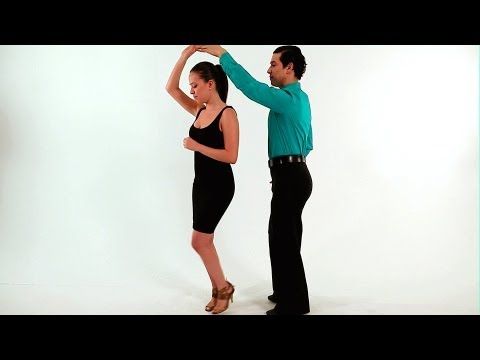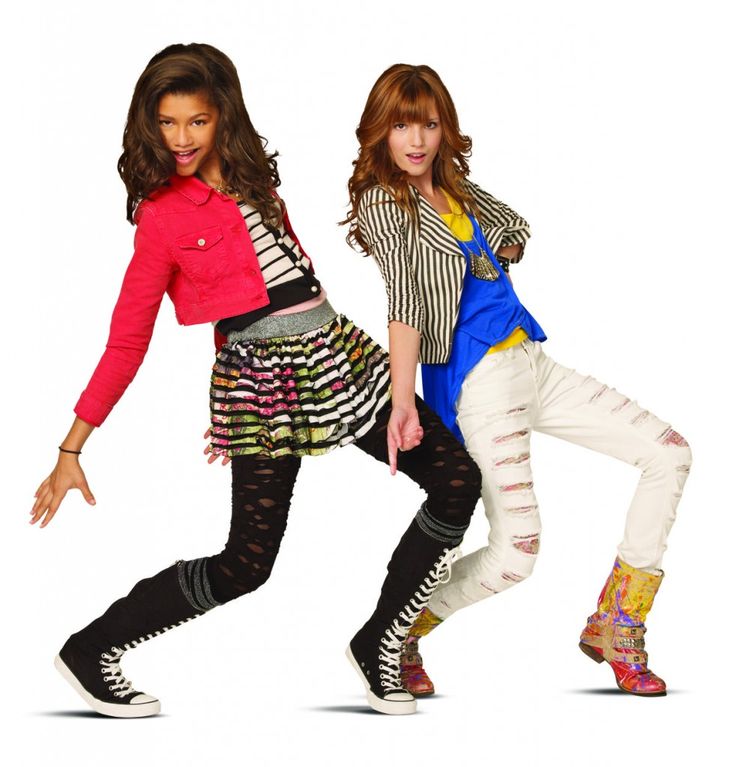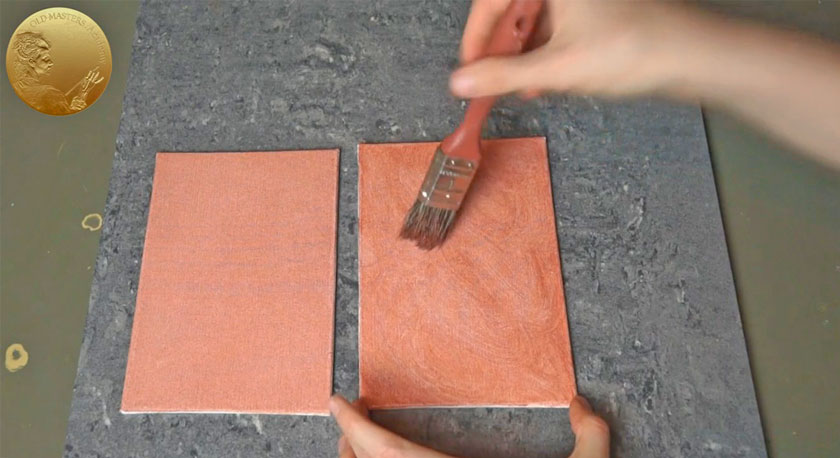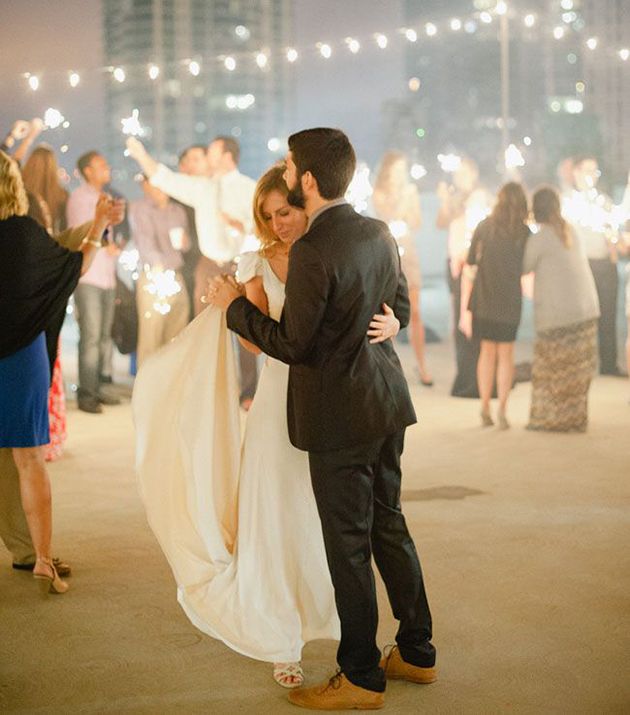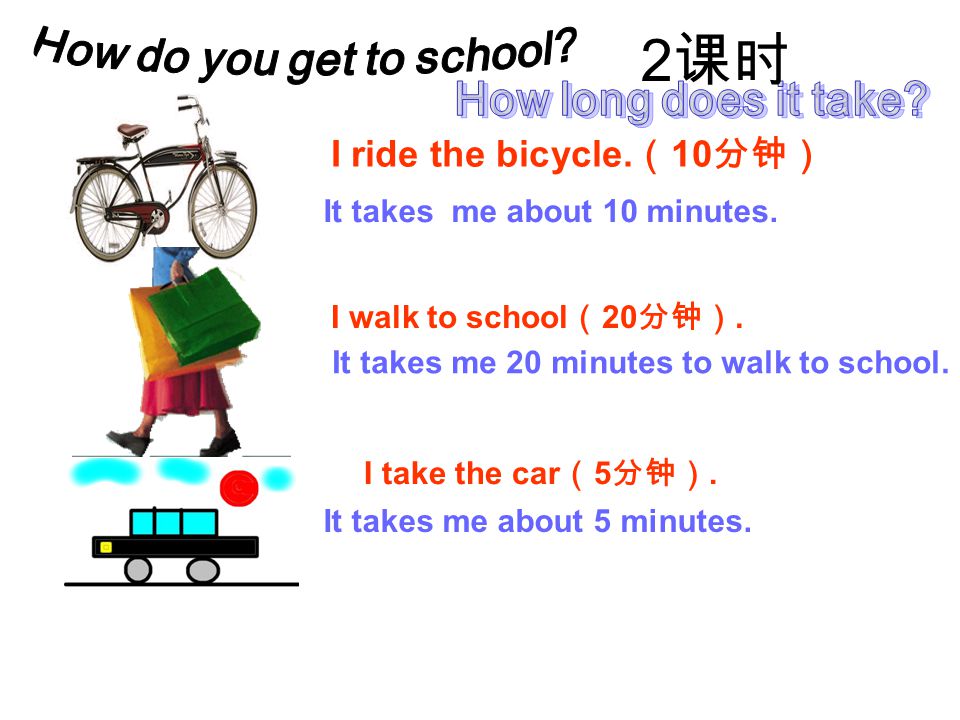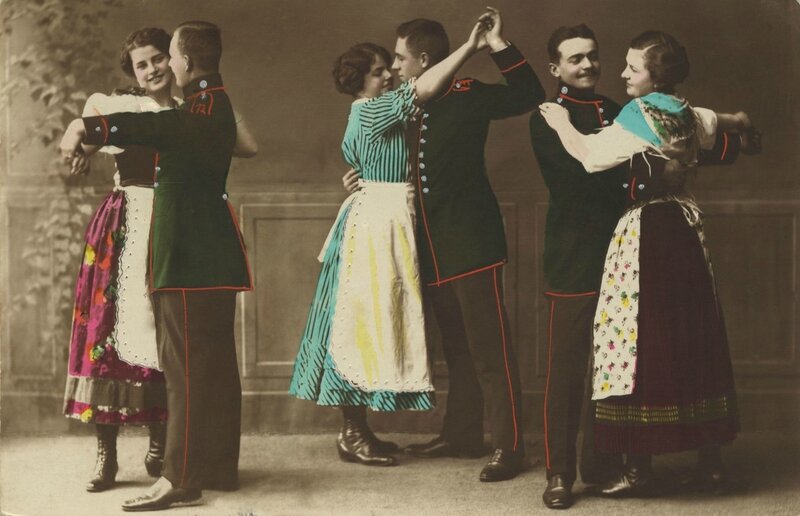This is how we do it dance steps
How To Do The Two Step
Video Transcript:
Alright guys, the next move we’re about to jump into is another basic hip hop move. It’s called the Two Step. Alright and once you get this move down, you’ll be able to use it with any style of music that comes on in any situation. So take a look at t first and then we’ll break it down step by step for you. Six, five, six, seven, eight. And five, six, five, six, seven, eight. Alright so let’s break it down step by step. Now the name is just how is sounds, it’s Two Steps.
So you’re going to start with your feet together and then you’re going to step out one with this foot. And then you’re going to step back in two with the other foot. Alright and different than a Step Touch, you’re not going to touch, you’re going to actually step it together. Stepping back out again, step, together, step, together, step, together and step, together. Alright. Now we’ve got the step down, we’re going to add the bounce into this.
So what I want you guys to do is start from a bent knee and every time you step you’re going to rock up, down, up, down, up, down, up and bounce it, up, up, and up, good. Now all I’m doing here is I’m just bending my torso forward, bending my knees slightly and bringing it up straight. Coming from down low to bouncing up. Alright so let’s try that bounce and we step side to side. Starting with your feet together, nice and slow, five, six, seven, eight and one, two, three, four, five, six, seven, again, and one, two, three, four, five, six, one more time, eight and one, two, three, four, five, six, seven and eight, good. Now what you do with your hands.
There’s a couple of different things you can do with your hands with this move. Anything that feels comfortable for you guys to do is fine. I’m going to give you a couple different things to try it out. Number one, we’re going to have our hands opening and closing. Open and close. Now when you close them, you’re hands are going to cross but it doesn’t matter which hand you put on top. It’s up to you. Open, close, open, close, open, close, open and close. So let’s give that a try with the same two steps using that bounce up as we step. Five, six, seven, eight, we go open, close, open, close, open, close, open and close, keep it up. Open, close, open, close, just like that, one more time through, and open, close, open, close, open, close, open, close. Nice job guys.
Open and close. Now when you close them, you’re hands are going to cross but it doesn’t matter which hand you put on top. It’s up to you. Open, close, open, close, open, close, open and close. So let’s give that a try with the same two steps using that bounce up as we step. Five, six, seven, eight, we go open, close, open, close, open, close, open and close, keep it up. Open, close, open, close, just like that, one more time through, and open, close, open, close, open, close, open, close. Nice job guys.
So a couple of things to remember before we try it with music. Just remember your body position, you’re going to be bent over slightly and then you’re going to be rocking up with your body. So not down, you want to start from the low position and rock up. And remember that basic step, just stepping from the side together, side, together. Alright so let’s give it a shot with music, just have some fun with it, groove it out to the song, you hear the beat it goes one, two, three, four, five, six, seven, eight, so you’ll step together, step together, step together. Just like that. Let’s give it a shot. Five, six, seven, eight and step. Good, keeping that bounce going with your body, nice guys, keep it up. Good, you got this basic in and out in a motion, keep that step going, try something different with your hands now, burry it up, hey, nice, you see what your mouth is doing, you can try that as well, Kyle and KC is doing the same thing, just give it a shot, make it your own, that’s the biggest thing. You can have your own personal style for you. Good, a couple more times, keep it going, and five, six, five, six, seven, eight.
Just like that. Let’s give it a shot. Five, six, seven, eight and step. Good, keeping that bounce going with your body, nice guys, keep it up. Good, you got this basic in and out in a motion, keep that step going, try something different with your hands now, burry it up, hey, nice, you see what your mouth is doing, you can try that as well, Kyle and KC is doing the same thing, just give it a shot, make it your own, that’s the biggest thing. You can have your own personal style for you. Good, a couple more times, keep it going, and five, six, five, six, seven, eight.
Back to hip hop dance moves
A Dancer's Guide to Knowing What Dance to Do to a Song » Dance With Brandee
A Dancer’s Guide to Knowing What Dance to Do
What Dance Do I Do to This Song?
Here’s how to your dance music know-howDancers, have you ever found yourself standing on the sidelines for the first half of each song trying to figure out what dance is supposed to be done to the music? Like my students you might be wondering: How do I know what dance to do to a song?
Many events help you out by announcing each song’s dance or posting a set list for your reference. Even then, some songs work equally well for more than one dance, so being able to match dances to songs is a skill to develop. And of course, you’ll need that skill at weddings and private parties that don’t have these dance aids.
Even then, some songs work equally well for more than one dance, so being able to match dances to songs is a skill to develop. And of course, you’ll need that skill at weddings and private parties that don’t have these dance aids.
Until there’s an app for it, I want to help you develop your dance music know-how. Of course, there are lots of variables in dancing and music, exceptions to the rules, etc. But I’m going to keep this simple, so consider this a rough guide to figuring out what to dance to a song.
No Hard and Fast Rules
First of all, unless you’re at a dance competition, know that there are no hard and fast rules for which dance must be performed to a particular song. You get to choose the dance you want to do. That said, when you fit a dance well to a song, it’s easier to keep rhythm, to express the character of the dance, and overall, it tends to just feel better.
And some dances’ music is unique enough that it will hit you clearly. For example, Tangos have a distinctive staccato rhythm and dramatic. Once you’ve heard a few Tangos, without needing to think, you’ll just know it’s a Tango.
Once you’ve heard a few Tangos, without needing to think, you’ll just know it’s a Tango.
For the rest, it’s really just a process of elimination. As you become more experienced, hearing the dance in most songs will become more automatic.
5 Easy Steps to Determine What Dance to Do
1. Get a Feel for the Song’s Speed
Ask: What’s the speed of this song?Start by determining the song’s tempo (i.e., it’s speed.) This simply means getting a feel for whether the song is slow or fast or somewhere in between.
Sometimes the instrumentation or vocals in a song can fake you out. For example, a song may sound very upbeat but actually have a rather slow beat. Until you get good at gauging a song’s tempo, just tap your toes or fingers to the beat of the song, becoming a human metronome for its true speed.
Once you know if the song is slow or fast (or somewhere in between), you can then rule out some dances. For example, if the song is fast, then all the slower dances are out, such as Rumba, Nightclub Two Step and Slow Waltz. Or if the song is really slow, you can cross off Cha Cha, Salsa, East Coast Swing and Viennese Waltz.
Or if the song is really slow, you can cross off Cha Cha, Salsa, East Coast Swing and Viennese Waltz.
Note: As a beginner, you’ll likely only be comfortable dancing in a narrow tempo range for each dance. So if you identify a song as Cha Cha but find yourself unable to keep up with the music, it doesn’t necessarily mean you made a mistake identify it as a Cha Cha—you just may not be experienced enough to dance to the full tempo range for Cha Cha.
If you’re curious, check out this list of tempo ranges for each dance (this is one person’s idea of good tempos, not an official list). In case you’re interested, here are the official tempos used at ballroom dance competitions.
2. Rule Out If It’s a Waltz
Waltzes have 3 beats in a measure (instead of 4)As you’re tapping out the speed of a song, count the beats. If it’s easy to count 1-2-3-4 it’s not a Waltz. However, if counting in four’s feels off, try counting in three’s: 1-2-3, 1-2-3.
Most songs are in 4/4-time, meaning there are four beats in each measure.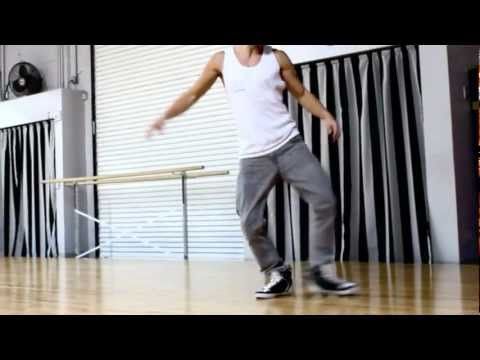 However, Waltzes are in 3/4-time, with only three beats in each measure. (There are other time signatures, but 4/4 and 3/4 are main ones you’ll encounter.)
However, Waltzes are in 3/4-time, with only three beats in each measure. (There are other time signatures, but 4/4 and 3/4 are main ones you’ll encounter.)
If 1-2-3 matches the music, you’ll know it’s a Waltz. And having already gauged the song’s speed, you can immediately determine whether it’s a Slow Waltz (slower) or Viennese Waltz (about twice as fast as Slow Waltz).
3. Listen to Its Rhythm/Feel
What’s the rhythm or feel of the song?If the song isn’t a Waltz, your next step is to pay attention to the song’s rhythm or feel. Is it happy, romantic, dramatic, bluesy, melancholic, or funky? Does it have a Latin/Afro-Cuban beat? Does it make you want to bounce, glide, twirl or march? Listening to the songs’ rhythm and character will help you sort it into one of a few broad categories: Ballroom, Latin, Swing, or other (Hustle, Country Western, Nightclub Two Step, etc.).
For example, say the song has a Latin rhythm. The most common Latin dances in ballroom/social dancing are Rumba, Cha Cha, Samba and Salsa. Rumba is the only one of these with a slower, romantic feel. So if the song is like that, you’re ready to Rumba!
Rumba is the only one of these with a slower, romantic feel. So if the song is like that, you’re ready to Rumba!
And if the song’s rhythm is upbeat, you can eliminate Rumba and then parse out which of the remaining three dances it might be. Samba has a very distinctive “boom-a-boom” percussive beat (think Brazilian Carnaval music). If you’re hearing that, it’s probably a Samba. If you’re not, congratulations, you’ve narrowed it down to a Cha Cha or Salsa.
4. When in Doubt, Step It Out
Dance in place to see what matches the musicContinuing with the same example, say you’ve figured out the song is either a Cha Cha or a Salsa. Cha Chas usually have a “cha-cha-cha” in their beat, although you may not be able to hear this until you have more experience.
At this point, it’s time to experiment with the basic steps in each dance. Do this on your own in place, so small and casual people might not even notice. Try a few Cha Cha basics and see how well your feet match the music. Then try the Salsa basic. Usually one will feel like the right fit and voila, you’ve successfully determined what dance to do to this song!
Then try the Salsa basic. Usually one will feel like the right fit and voila, you’ve successfully determined what dance to do to this song!
5. Or “Cheat” and Steal a Peek
If you’re still stumped after you’ve “stepped it out,” have a look and see what others are dancing. As a beginner, it’s often best to look at intermediate-level dancers. Fellow novices are likely as lost as you are, and advanced dancers may be dancing fancy figures with so much styling and technique you won’t even recognize what they’re dancing as the same dance you know! Intermediate dancers, however, will know which dance to do to a song yet will still be dancing figures you can recognize.
Have Fun: Make into a Game!
I encourage you to make a game out of matching dances to songs when you’re not out dancing. Play the “What Could I Dance to This Song” game when you’re listening to music at home, in the car or when you hear a tune playing at a store or on the street.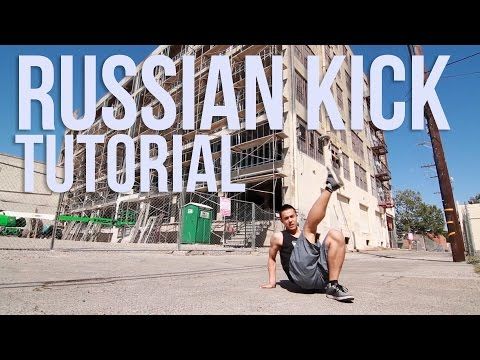
Of course, all music isn’t made for partner dancing (e.g., classical, electronica, hip hop and even many pop tunes). So to make it easier on yourself you may want to listen to songs pre-selected for a dancing, such as those off a ballroom dance practice CD or from a recommended playlist like this.
Remember, ultimately which dance to do is your choice, so have fun and feel free to be creative. That said, be respectful of other dancers on the floor. For example, make sure you use proper floor etiquette, especially if you decide to do a dance that’s different from what the majority on the floor is doing. If doing a traveling dance, stay on the outside track, moving in the line of dance; if doing a spot (non-traveling) dance, dance in the center of the floor.
Over time the process of matching songs to dances will become faster and simpler. You may even find yourself mentoring new dancers on the subject!
How the Context Contemporary Dance Festival continues to build a dialogue between Russia and the world
This year, despite everything, the Context International Contemporary Dance Festival is held for the tenth time.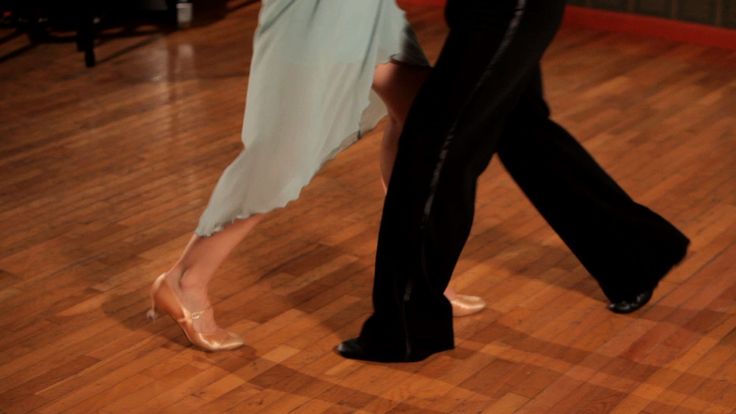 Yulia Nikulina, Director of the Diana Vishneva Foundation and Managing Director for the Development of the Context Festival, spoke about how the life of contemporary choreography and dance in Russia has changed in 2022, and where the community now finds support and hope.
Yulia Nikulina, Director of the Diana Vishneva Foundation and Managing Director for the Development of the Context Festival, spoke about how the life of contemporary choreography and dance in Russia has changed in 2022, and where the community now finds support and hope.
International Festival of Contemporary Choreography Context. Diana Vishneva, founded by the prima ballerina of the Mariinsky Theatre, Diana Vishneva, has been running since 2013. Having started in Moscow, by 2016 it began to expand its geography, starting to hold part of the events in St. Petersburg. For ten years, dozens of dance companies from all over the world, from Germany to the USA, have taken part in the festival, some of which, thanks to Context, visited Russia for the first time. In addition, every spring the festival starts accepting applications for the competition of young choreographers: in the fall, its finalists present their works to an international jury. Finally, from the first year, the educational program has become an important part of the festival - lectures, intensives and master classes from the best choreographers, critics and other specialists.
— Tell us how things are going with your foundation and the festival after February 24? To what extent did you have to reformat or did you manage to stay within the existing plans?
— The Context Festival and the Diana Vishneva Foundation have faced the situation not for the first time when everything that had been planned two years before had to be redone. By February of this year, we had assembled an amazing anniversary program, for which we were preparing in advance. There were going to be four big international premieres. The festival was supposed to start on June 1, and everything was already at a low start - we provided funding for the project, and the whole team was charged with a big project. In addition, today we are on the verge of the tenth season of the festival. This is a very important date for us, for which we have been preparing, which we have been talking about for the past two years.
In general, the festival is a very understandable formula for a cultural and creative project, but by its tenth anniversary, the Context has already grown from a festival concept.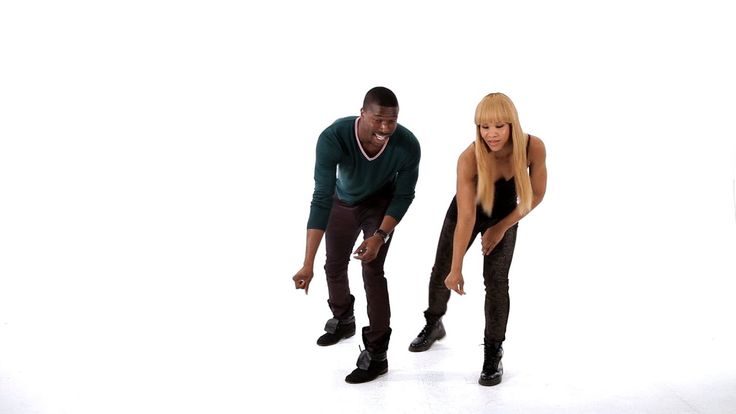 We not only bring shows, do tours and fill some part of the city with a cultural context for two weeks. We went further - to create a modern dance movement in Russia, creating a dialogue with a modern Russian choreographer and dancer.
We not only bring shows, do tours and fill some part of the city with a cultural context for two weeks. We went further - to create a modern dance movement in Russia, creating a dialogue with a modern Russian choreographer and dancer.
For ten years, through the prism of various projects, various initiatives, we have been raising our audience.
What about the festival today? The festival has accumulated a lot of experience. He lived through the formative years when we were just a laboratory project and a review of young Russian choreographers from all over Russia. Then we grew to a big two-week festival, which already showed international blockbusters, premieres of modern companies, choreographers, famous artists. A lot of Diana's like-minded people came and went on stage with her. We are talking about choreographers Ohad Naarin, Paul Lightfoot and Sol Leon, Eric Gauthier, artists Aurélie Dupont, Alessandra Ferry, Drew Jacoby, and others. Of course, it was such a great gift to the audience of the festival.
Since 2015, we have been taking the festival from Moscow to St. Petersburg. We made a review of Russian choreographers from all over Russia, brought them to the festival in Moscow, St. Petersburg, Yekaterinburg, Tashkent, Perm. And since 2017, we have entered the era of our own productions. For each festival, this is a serious step forward when the team is already starting to work as a production center. That is, we enable choreographers to create new works by interacting with us.
This year we will bring together sixteen choreographers from different regions who will create new works. All of them went one way or another with us, with each of them we have our own story.
— Was this year's program foreign?
— Yes, all summer long we would show four big international performances — including two theater companies that have never been to Russia. But at the same time, even before February, the festival plan placed a very serious emphasis on the Russian part as well - we did not revise the entire agenda for some new reasons.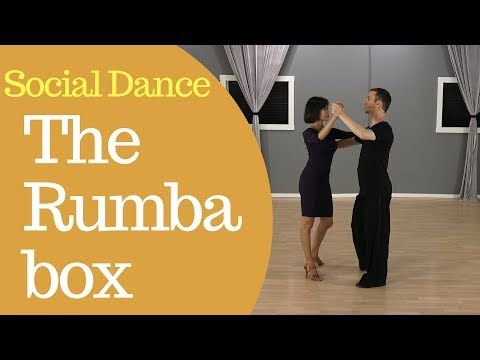 In the spring, we invited the choreographers who have been with us all these ten years to work in one way or another, and they sent ideas that we put into work. And now we will see the results - but in an expanded format.
In the spring, we invited the choreographers who have been with us all these ten years to work in one way or another, and they sent ideas that we put into work. And now we will see the results - but in an expanded format.
The international program has been cancelled, but everyone understands everything. No one has questions, we retain the possibility of future cooperation - now is just not the time to do it.
— And how was this communication with foreign teams built? Did they just say they weren't ready right now or that they would see how things unfold and come back to you with some new proposals? How are these relations being built in the industry now in general - after all, there is a lot of talk about canceling Russian culture?
- Not only conversations, this is really happening in real time.
In general, we, as Diana Vishneva's Context Festival, have very strong relationships with all theaters and representatives of international contemporary dance. We always had the opportunity to go to them with any offer. They always willingly came to the festival. And, of course, as a team, we provided comfortable conditions for the import and display of international projects.
We always had the opportunity to go to them with any offer. They always willingly came to the festival. And, of course, as a team, we provided comfortable conditions for the import and display of international projects.
One of our missions is to build a dialogue between modern Russian and international dance, to unite those who create this dance on one stage.
All over the world there are independent groups, and there are state theaters and groups that are financed by this or that state. They are, of course, not free in their decisions. And if in the world in which we previously created the festival, no one even asked the question “Can I go or not?”, Now this is becoming a reason for reflection.
And I do not exclude, of course, the general trend, which I consider absolutely justified - more attention to the East and Asia. Contact with Asian countries in our cultural and creative industry is not so established. Some period should pass, and they will come to us in the same way, and we to them, and this will also be normal for us.
— What is going on inside the Russian industry? Are there any trends emerging after the first half of the year?
- It is interesting to analyze now, when we and our colleagues in the festival workshop are faced with the problem of canceling international projects. At the beginning of the summer, we held a professional meeting, invited all our festival participants to a dialogue, held master classes, seminars, and they just shared their inner sense of time. And they had this feeling - it was very balanced and calm, very sober. They do not deceive themselves about what is happening with us now, but they also do not try to deliberately respond to what is happening with their creativity. They continue to explore the vector that they have always been interested in, do not betray themselves, do not go on a creative search or vacation. This really delighted me in modern Russian choreographers, because it is inner strength and inner freedom.
Why does contemporary art sometimes resonate so well with viewers? Because you always find in it some kind of answer for yourself - one that is nowhere to be found.
And I want to believe that this harmonious contact will happen at the Context festival. Because modern choreography calls for a dialogue with oneself. We will talk about humanity, about the path of a person, about his perception of himself in the world.
- A therapeutic program in a sense.
- In a way, yes. I don’t want to say that we will have some kind of meditative practice there, no. But in the mood of the authors it is read that it is important for them to analyze the essence of human life and time. Even the names of the performances say: “Form Zero” - Pavel Glukhov puts on a big performance with the artists of the Opera and Ballet Theater of the Republic of Karelia. We will have "Singularity" by Kirill Radev, there will be "Matter", there will be a special work by Anna Shchekleina called "Reality", the performative program will be filled with vivid statements of the authors.
I think the choreographers are doing a great job: almost everyone has their own community in the regions. And for us, as a festival, it is important to bring and show these communities.
And for us, as a festival, it is important to bring and show these communities.
- I just wanted to ask: those challenges that are associated with the cancellation of part of the international program - do they contribute to the search for something new within the country, some talents that were not focused enough before? It is clear that you have worked with regions before, but has the percentage of your attention to regional dancers, choreographers increased?
- I can't say that this is something new for the Context festival that we haven't done before. I see this process a little differently, because we have more global structural changes. We have been talking about this for a very long time and this year we decided to create our own project dance group. This is a very important step for the festival. We are pleased that we are doing this at a time when it is very necessary for the dancers and the community. It's no secret that now there is a shortage of work for independent artists - and for those who are in theaters, the reduction of projects and performances also has its own not very positive effect. I hope that we help the industry in this regard, and this will be properly received.
I hope that we help the industry in this regard, and this will be properly received.
As for the choreographers, this year we did not hold an additional competition, we did not look for new names, but we created several new projects, including a joint project with the Cosmoscow fair. She has the Artist of the Year this year, Valery Chtak, and we have chosen three choreographers, including a new choreographer for us, Ilya Manilov. That is, we are expanding the pool of choreographers with whom we work, also in a new way.
- And what place does Russia currently occupy in the world in terms of modern choreography?
- The Context Festival and the Foundation are associated with the name of Diana Vishneva. She made a serious step in her career from classical ballet to modern dance and, through her own efforts, achieved cooperation with the best choreographers. And thus paved a whole corridor of opportunities for all Russian contemporary dance. In turn, they also showed interest in Russia. It was recently, only ten or fifteen years ago.
It was recently, only ten or fifteen years ago.
Previously, the dialogue was still built only through the prism of our largest theaters, which, due to their capabilities, took out big tours. We know a lot of Russian names that are in demand in the West, but they all come from the classical theater stage. It cannot be said that we are listed on the international stage as a new source of modern dance. There is probably no stable image of what Russian modern dance is in a clearly crystallized form.
— That is, relatively speaking, there is no national school, some kind of language or technique?
- Everything, as a rule, comes from the names of choreographers who have a bright and very understandable dance language for the audience, high-quality projects. And if he begins to be associated with some country or with a school, then he is a representative of this movement. We are still taking steps in this direction. We certainly have very bright directors of modern dance, we also have many local schools.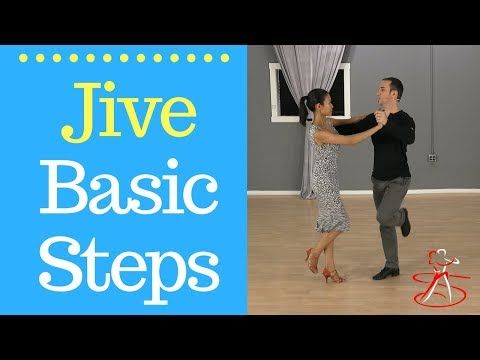
— And what is the general geography of Russian dance?
- They dance everywhere. Dance is the most accessible art form. Therefore, we even did an analysis for ourselves in Russia, where there is a point of attraction and, most importantly, a viewer. For us, as a festival, it is very interesting to reach a new audience. And it became clear that from Murmansk to Vladivostok, there are some kind of dance communities everywhere.
There are dancing megacities - these are Yekaterinburg, Novosibirsk, Chelyabinsk, Voronezh, Perm. The attraction is also connected with the very pronounced activity of local theaters, which are also switching to more interdisciplinary projects, starting to shake the direction of modern dance. And you need to interact with these communities. We are doing an educational program this year: we will have ten regions, we will bring our choreographers there, attract local professionals and venues who will conduct master classes.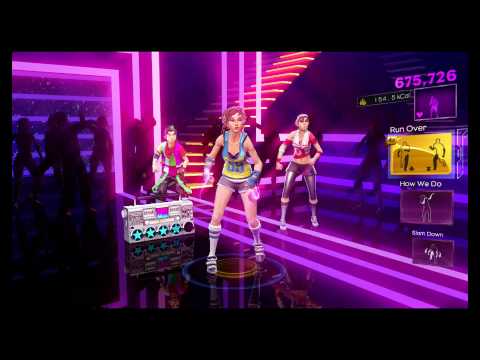 There will be a film program that will also travel to the regions.
There will be a film program that will also travel to the regions.
Is this a feature film, a documentary?
— Every year, our film program was presented with the hottest films from international festivals. This year there will be a different approach, because the Context festival already has very hard muscles and is ready to show its own.
We will have a documentary about the decade of Context. I wanted to analyze what the festival has done over the years and what we have achieved. We will show how the Context festival is going. It can be interesting even for those who have never been to the festival - it is always interesting to be behind the scenes - and for ourselves: to see ourselves from the outside. The premiere is scheduled for early December, and we are also filming all the events that will take place now, and they will go down in this story.
And we also had a completely experimental project, as it seemed to us, but, as it turned out later, very, very necessary. We made an open call for short dance films from all over the world. We thought it would be difficult, but we already have one and a half thousand applications from all over the world. This is an amazing result. Very beautiful works that inspired us to expand this program - initially we thought it would be one block, and now we are collecting two different short films.
We made an open call for short dance films from all over the world. We thought it would be difficult, but we already have one and a half thousand applications from all over the world. This is an amazing result. Very beautiful works that inspired us to expand this program - initially we thought it would be one block, and now we are collecting two different short films.
We want to raise young directors who work with dance on camera. Because we have very few specialists of this profile; in general, the dance is not so easy to film.
Applications from all over the world are sent by independent authors, that is, it is their personal decision whether they want or do not want to send their work to the festival in Russia. Actually, the answer to the question about interaction with the international community: very many people want to. And we will have short films from South Korea, and from America, and from Europe, from very many countries.
- In general, will this program take place offline?
- Yes, we are trying to do everything offline now, because we got a little tired of online over the previous two years.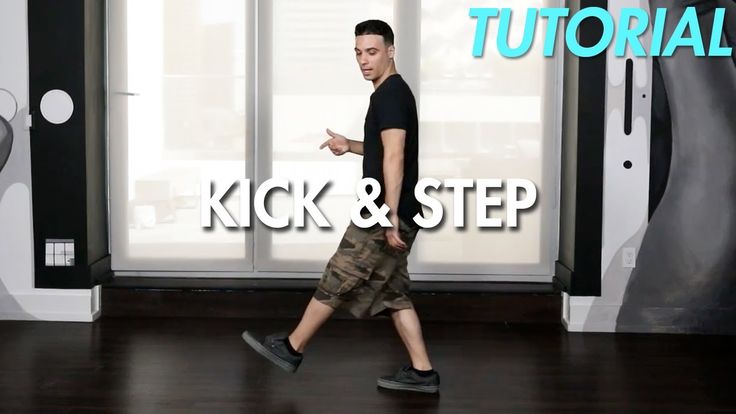 True, thanks to online, a lot of new projects have happened - we even shot the film "Slepok" with the Pushkin Museum and the Aksenov Family Foundation and created the On Air media platform, on which we had all the educational projects. Of course, this year we have a great desire to physically meet people on the sites, in cinema halls.
True, thanks to online, a lot of new projects have happened - we even shot the film "Slepok" with the Pushkin Museum and the Aksenov Family Foundation and created the On Air media platform, on which we had all the educational projects. Of course, this year we have a great desire to physically meet people on the sites, in cinema halls.
— What platforms do you work with?
- This year we stop at a small number of key sites in the city. In Moscow, it will be the Winzavod Center for Contemporary Art. We will occupy it for three days and during these three days we will show the Context.10 program, where seven choreographers will stage their performances with the participation of dancers from different dance communities and groups. Even this year, we have a lot of work with the Museum of Moscow: there we have to create a work by Anya Shchekleina, which she is doing as a participant in our Context Symphony competition. And in St. Petersburg we will be at Sevcable Port.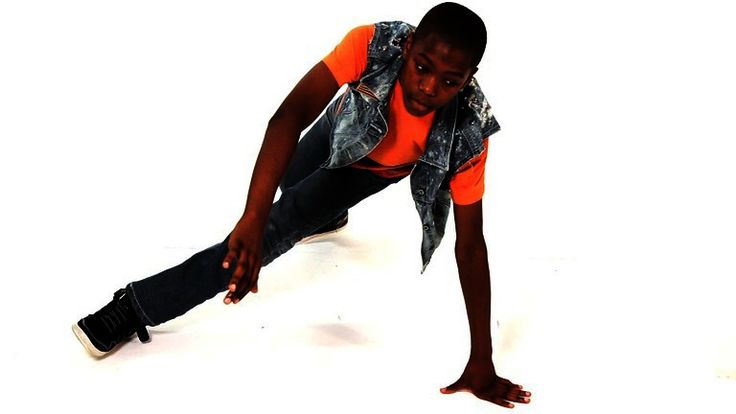
— How responsive is the Russian audience to this type of art — to a modern and progressive choreographic project?
— Spectators of the Context festival are probably special and shaped by this international review of contemporary choreography. We have a well-versed and thoughtful audience, a large percentage of our audience are professional choreographers, dancers, representatives of cultural institutions. We are a kind of pioneers, therefore we are interesting for the development of the industry.
How does the audience perceive contemporary dance? Like any kind of contemporary art, it can be understood, or it can be incomprehensible. And often the viewer can leave the hall and say that he had to strain to understand that it is beautiful.
Therefore, one of the key tasks of the team is for the viewer to have a logical match with what he bought a ticket for and what he received. We put a lot of emphasis on this: we work a lot on the description texts that precede the performance. We make sure that the venue on which the performance takes place is as suitable as possible for it.
We make sure that the venue on which the performance takes place is as suitable as possible for it.
And of course, a huge part of the festival's budget is the production scenes. For example, when entering the territory of a hangar or a museum - and we have already left the theater space - we are building the stage from scratch, literally creating scenery for the author. We have an absolutely clear explanation of why to do this. This is just bringing the modern Russian author to the production level, which is available to Western authors. The result is expressed in the fact that the viewer comes out and understands that he saw why he was here.
— Have you yourself thought about going somewhere, changing the focus of your activity — or staying within the profession, but moving somewhere?
- I do what I do with great love. You could, of course, take the position of seeking comfort, turn everything around and think in a different direction. But I believe that now it is important, on the one hand, to freeze a little, and on the other hand, to continue to create and give even more to the cause that you have been building for the past few years.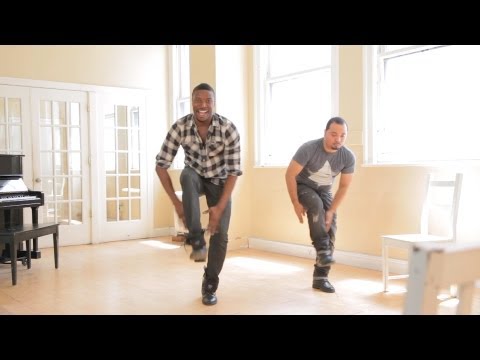 What I mean: try to keep what we did as much as possible, because we did it for each other. Appreciate results. I understand that for many this now sounds like a utopia, but in the example of what we are doing, I see the correctness of this position.
What I mean: try to keep what we did as much as possible, because we did it for each other. Appreciate results. I understand that for many this now sounds like a utopia, but in the example of what we are doing, I see the correctness of this position.
And it's not for nothing that I'm talking about the entire community that continues to work - it is not looking for an opportunity to move. When a person does not have a chance to do something, of course, he leaves. But speaking about myself, I can say that we are preserving what we have been doing here, we are trying to preserve those who make art, to interact with related institutions that are friendly to us, because this gives strength, this provides a resource for implementation. And on the other hand, what I see exactly is the need to interact with the world that is ready to interact.
subtleties that no one knows about
The 13th season of the country's most incendiary show, Dancing with the Stars, has ended on the Rossiya 1 TV channel.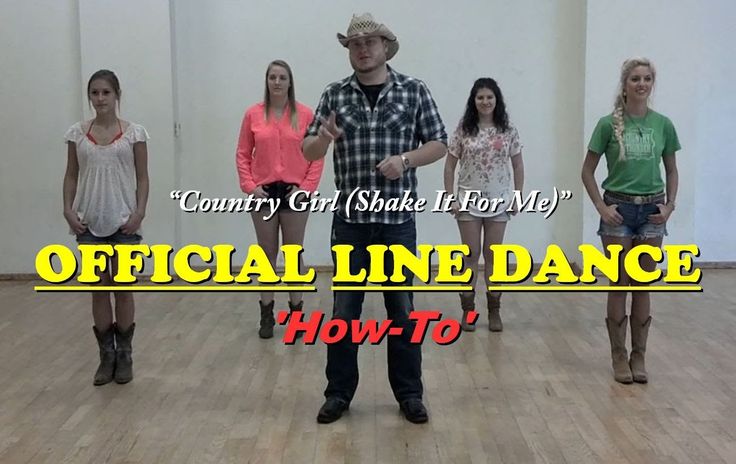 10 pairs of contestants met on the parquet, whose performances left no one indifferent. The media platform "Looking" looked behind the scenes of the project and found out what painstaking work is behind its creation.
10 pairs of contestants met on the parquet, whose performances left no one indifferent. The media platform "Looking" looked behind the scenes of the project and found out what painstaking work is behind its creation.
Last weekend ended the 13th season of the show "Dancing with the Stars" - a worldwide hit, which from year to year attracts the attention of viewers around the world. For 15 years, the audience of the TV channel "Russia 1" has been watching how popular artists take their first steps on the floor and overcome themselves in order to show real mastery in the final! Our correspondents asked the creators of the project about its subtleties and features. All episodes of the new season are available on the Watch platform.
About the project
Vasily Kozar, director, chief choreographer
We start discussing the project from September-October. And in November-December, the most dense period begins, where I already begin to think through the broadcasts, themes and all, all the components. An ordinary viewer watches the stars, and it is very interesting for him to watch how they cope inside everything that happens, how they will, as Tsiskaridze says, "wag their hips." It's all very curious, unusual. And, of course, the dance itself makes you fall in love! After this project, people start thinking: "I can do it too! Why shouldn't I try it too?!" Why do people even dance? Because they enjoy it, and you want to prolong this moment of euphoria, whether it's a club or just a dance with your loved one! When people have a desire to even just start moving - it's very cool!
An ordinary viewer watches the stars, and it is very interesting for him to watch how they cope inside everything that happens, how they will, as Tsiskaridze says, "wag their hips." It's all very curious, unusual. And, of course, the dance itself makes you fall in love! After this project, people start thinking: "I can do it too! Why shouldn't I try it too?!" Why do people even dance? Because they enjoy it, and you want to prolong this moment of euphoria, whether it's a club or just a dance with your loved one! When people have a desire to even just start moving - it's very cool!
Shot from the program "Dancing with the Stars"
Ekaterina Belaya, costume designer
I really like the specifics of the project, the fact that we do not just show ballroom dancing that we danced like this, but it turns out that each number is a mini-performance. That is what energizes me. I really burn with these ideas, I like that you can reveal yourself and show from different sides in terms of costume.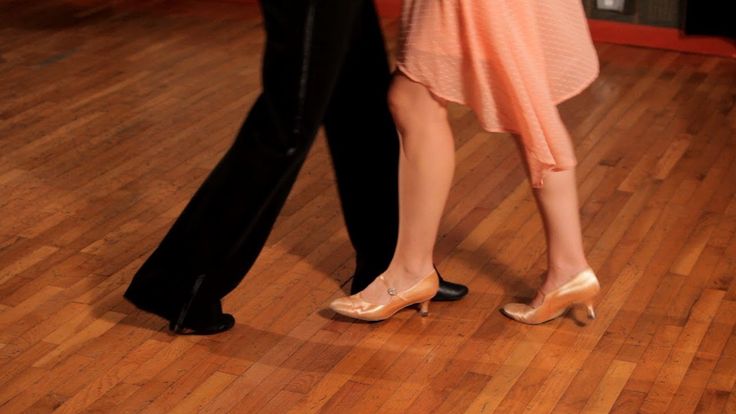 We make a lot of little stories every week. And it's very cool! Probably, it is precisely because of this that I am with all my heart and soul in this project, I immerse myself in every number, I live all these stories in the same way as the performers. It gives incredible inspiration and a lot of energy.
We make a lot of little stories every week. And it's very cool! Probably, it is precisely because of this that I am with all my heart and soul in this project, I immerse myself in every number, I live all these stories in the same way as the performers. It gives incredible inspiration and a lot of energy.
Number: from and to
Vasily Kozar, director, chief choreographer
We are not at a ballroom tournament, where we only look at the dance. We are looking at an artist who falls into certain circumstances and dances in a certain style. And these "circumstances" are called a number, and in this number everything is important - the scenery, and the idea, and how we came to it, and what we want to say, and what mood to give, and what effect - all together. That is, all these moments must be combined together, and then a good number is obtained.
I come up with a certain theme of the broadcast in which we exist. After that, I distribute all the dance styles to each of the couples. A couple who danced a dramatic story first should dance a contrast next time, couples should always be different. After that, for each of the couples, I come up with a script for the performance: what should be the dramaturgy inside the performance, what will be the choreography, what should be the costume, scenery, graphics, lighting, how should we film it. And I tell everyone my ideas. Everyone listens, gives tips on where and what can be improved in terms of the TV picture, and then I just broadcast it directly to the choreographers. I assign a specific responsible choreographer for each pair, who takes and executes this idea, bringing his vision, his own style, his own content to it, and we are already further creating a performance together with him. And then we rehearse it all week, rehearse, rehearse, consult, try, test, change, and then we come to the set, and after that - everything is ready!
A couple who danced a dramatic story first should dance a contrast next time, couples should always be different. After that, for each of the couples, I come up with a script for the performance: what should be the dramaturgy inside the performance, what will be the choreography, what should be the costume, scenery, graphics, lighting, how should we film it. And I tell everyone my ideas. Everyone listens, gives tips on where and what can be improved in terms of the TV picture, and then I just broadcast it directly to the choreographers. I assign a specific responsible choreographer for each pair, who takes and executes this idea, bringing his vision, his own style, his own content to it, and we are already further creating a performance together with him. And then we rehearse it all week, rehearse, rehearse, consult, try, test, change, and then we come to the set, and after that - everything is ready!
Shot from the program "Dancing with the Stars"
Ekaterina Belaya, costume designer
The first broadcast is, in principle, the most difficult one, because there is a grinding process, we only find out with whom we work.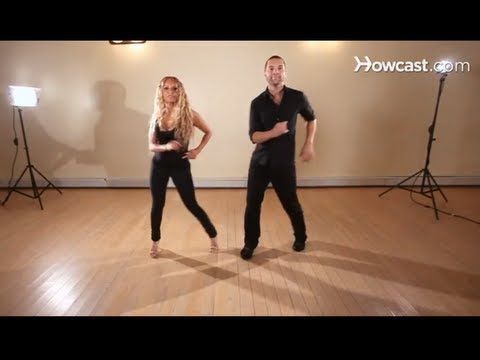 You need to understand the figure of everyone, preferences, who likes what, does not like it - each star has its own quirks with regards to colors and shapes. But every week our time gets shorter and shorter, because, unfortunately, even if I know the idea of the performance two weeks in advance, it’s impossible to start doing it, because then there will still be changes. Usually on Saturday at the highway we discuss the idea of a costume with a couple, I show the finished sketches, and after looking at the key points of the choreography, I start the sketch. There were cases when our number changed three days before the broadcast. Not in terms of choreography, but simply the concept was changing. We understood with the whole team that it was probably worth showing a certain character from the other side, giving him a different character, and then we completely redid the costumes. Such force majeure happens, but not often. And sometimes someone managed to lose weight in three days and urgently needs to be sutured.
You need to understand the figure of everyone, preferences, who likes what, does not like it - each star has its own quirks with regards to colors and shapes. But every week our time gets shorter and shorter, because, unfortunately, even if I know the idea of the performance two weeks in advance, it’s impossible to start doing it, because then there will still be changes. Usually on Saturday at the highway we discuss the idea of a costume with a couple, I show the finished sketches, and after looking at the key points of the choreography, I start the sketch. There were cases when our number changed three days before the broadcast. Not in terms of choreography, but simply the concept was changing. We understood with the whole team that it was probably worth showing a certain character from the other side, giving him a different character, and then we completely redid the costumes. Such force majeure happens, but not often. And sometimes someone managed to lose weight in three days and urgently needs to be sutured. And somewhere there, for example, I look in a frame with light, with scenery, I understand that I need to add some accents, details, add colors. And also follow the make-up and see how everything fits together. It seems that the costume is ready, but everything rests on the details.
And somewhere there, for example, I look in a frame with light, with scenery, I understand that I need to add some accents, details, add colors. And also follow the make-up and see how everything fits together. It seems that the costume is ready, but everything rests on the details.
Nikolai Pantyukhin, choreographer
The director gives us the initial reference of the performance. This is basically a certain effect, which is stated at the very beginning of the issue. And, what I really like, we come up with the dramaturgy, the plot "inside" together with the participants. That is, in this regard, we have the freedom to choose according to images, according to relationships within. But the framework exists in terms of the first application reference. Everything else we build ourselves. It is very important when I choreograph that one movement flows smoothly into another, so that these transitions are beautiful, comfortable and "watchable". Nobody cancels the effect of surprise in the choreography, but everything should be organic. In fact, from season to season choreographers have more and more difficult. Why? I don't want to repeat myself.
In fact, from season to season choreographers have more and more difficult. Why? I don't want to repeat myself.
Shot from the program "Dancing with the Stars"
Dance couples
Vasily Kozar, director, chief choreographer
All 10 couples are all my favorites! Because if at least one pair "sinks" a little, it means that I didn't finish it. Therefore, it is important for me that all 10 couples receive incredibly beautiful numbers, in which there would be everything so that they reveal themselves as much as possible. My idea should clearly coincide with the artist, clearly coincide with the choreographer, clearly coincide with the musical accompaniment, with the costume, with the scenery, and enter the venue with the maximum result.
Nikolay Pantyukhin, choreographer
We have no right to choose our favorites. That is, the choreographer is such a sexless creature: not "he" and not "she". He must understand the psychology of both male and female.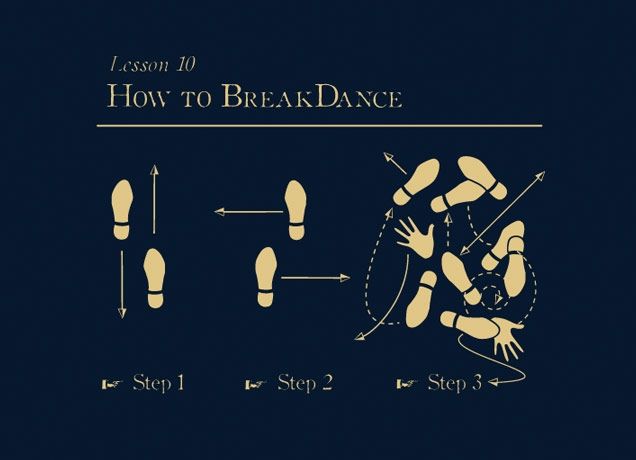 And, working with different artists, we should not show that we are interested in working with that couple, but not with this one. We really treat everyone equally, and this neutrality must be maintained until the end of the project.
And, working with different artists, we should not show that we are interested in working with that couple, but not with this one. We really treat everyone equally, and this neutrality must be maintained until the end of the project.
Shot from the program "Dancing with the Stars"
Mikhail Shchepkin, dancer, participant of the project
We always work with the people we have. We do not influence the choice of a partner in any way, and the stars have exactly the same situation. I don’t know where it all happens, behind what doors, but there is a certain composition of participants, and every year there is a casting, new contestants are added, as you can see, the composition of dancers also changes from season to season. And, accordingly, everyone is formed in pairs. Then the first meeting takes place, we get to know each other. This year, as such, there was no profile of the first meeting at all, because you saw how interesting everything was done - entering the first number. The couple was presented in a completely different way, I really liked this format. Each couple was presented differently.
The couple was presented in a completely different way, I really liked this format. Each couple was presented differently.
The main thing is that the costume fits
Ekaterina Belaya, costume designer
It is very important that the costume helps the dance and complements the dance, especially when it comes to girls. Depending on the movement, the outfit should be very light and not distracting, or, conversely, be heavy and flow. The dress should continue the artist, help him. Of course, this is exactly why I don't put the dress into work until I see the choreography. That is, it all works together. In general, we try to combine fashion, style and dance nuances. We have practically no standard dance dresses. We work more for the idea, for the concept, we want to do it stylishly and tasty. Sometimes you want to take a walk, but there are restrictions just because everything should be absolutely comfortable. I hope that we will give away the costumes to our beautiful dancers and stars, whoever wants what. Because it's so insulting when such beauty just goes to the warehouse and dies there.
Because it's so insulting when such beauty just goes to the warehouse and dies there.
Shot from the program "Dancing with the Stars"
Trainings and rehearsals
Aleksandra Rebenok, actress
Here, such muscles ached that I had never felt. And it turned out that such muscle groups are involved in ballroom dancing, which you will never reach in any fitness or sport. And they suddenly activated and began to load. And, of course, they made themselves felt, and I was surprised that there was some other muscle group that I did not know about.
Inna Svechnikova, dancer, participant of the project
We are given a week for each dance: on Monday we receive music, and on Sunday we go on the air. Each time is different, because each artist is very individual, but we do not have the task of making him a professional dancer, we have the task of creating an image. Here the main thing is to catch co-creation: to take what a person is strong in and transform it into a dance.
Shot from the program "Dancing with the Stars"
Nikolai Pantyukhin, choreographer
Choreography does not take much time. More psychology. Removal of psychological clamps that appear as a result of stress. I'm talking about a star. A week is given to put the number! I imagine what goes on in a person's head. And our task is to neutralize this stressful level, make it accessible, inspire confidence, because they have no choice - either you trust, or you are in some kind of constant fuss. After the number is set, our task is to release it on the air. We are with the couple to the last, I’m here with the couple I work with, see off to the point from which they start on the air, give the final parting speech, and with God.
Dance styles
Inna Svechnikova, dancer, participant of the project
dancers, because we are also expanding our boundaries, learning new directions together with our artists. I have been ballroom dancing my entire professional career, for over 25 years. But the longer we dance, the more we discover new opportunities for ourselves, that is, ballroom dancing is still limited by some kind of technique, rules, so we leave more and "dig" in related directions.
I have been ballroom dancing my entire professional career, for over 25 years. But the longer we dance, the more we discover new opportunities for ourselves, that is, ballroom dancing is still limited by some kind of technique, rules, so we leave more and "dig" in related directions.
Shot from the program "Dancing with the Stars"
Vasily Kozar, director, chief choreographer
The classical program is wonderful because you feel such inspiration and static in everything that happens, it inspires. Modern styles are the closest thing for me, because initially, as a choreographer, I developed in modern choreography: modern, contemporary, and everything like that. And all this is close to me, because I lived with it for many, many years. So I don't want to highlight anything: I want each style to complement itself. Plus, there is always something new to look forward to!
Pavel Efremov, choreographer
We combine 100 percent! We look in different directions.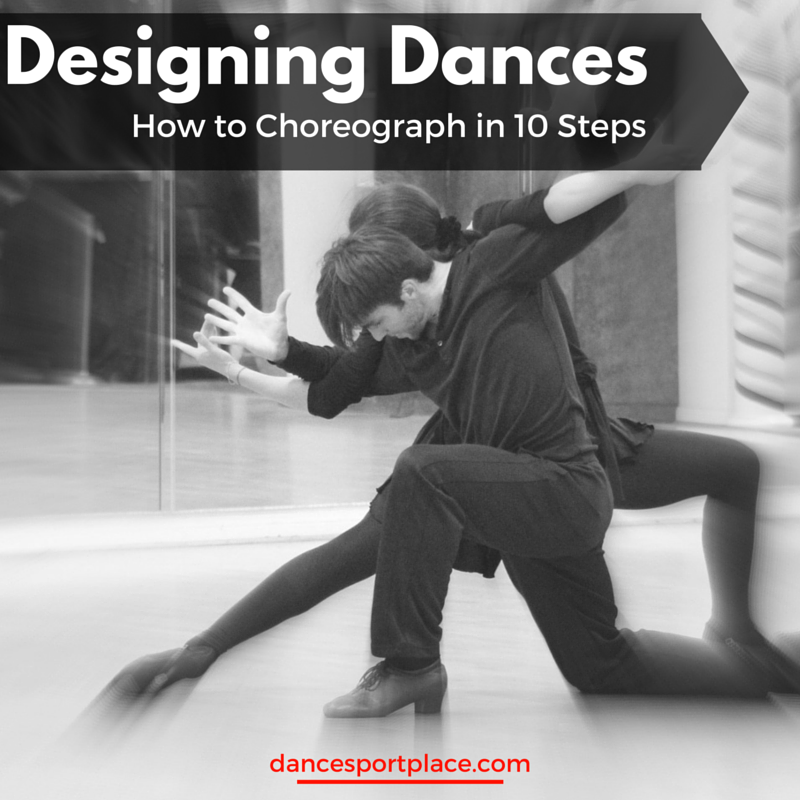 There are such "rails" of sports ballroom dancing, which we, of course, pay attention to, in which we are present, in which we practice, develop, bring in ballroom dancing, ballroom choreography, some new movements, new thoughts.
There are such "rails" of sports ballroom dancing, which we, of course, pay attention to, in which we are present, in which we practice, develop, bring in ballroom dancing, ballroom choreography, some new movements, new thoughts.
Mikhail Shchepkin, dancer, participant of the project water. I am calm about the dances of the European program - these are waltzes and foxtrots. I really like to stage Latin and teach people, contempo is just for the soul, everything else is because it is necessary.
Shot from the program "Dancing with the Stars"
Ekaterina Belaya, costume designer
I fell in love with paso doble, I fell in love with rumba very much. And sometimes I go beyond, we even had small conflicts with the choreographer. He says: "No, paso doble is Spain, you definitely need this Spanish skirt, or a flower in your head, or something else!" But I still stand on the idea: that is, if the idea of the performance, in principle, does not imply a Spanish costume, then here we find a compromise. Contempo is the most difficult for me, because I don’t want to repeat myself, I don’t want to do the same, I don’t want to do the same. And my biggest pain is the contempo in men! Sometimes there are such numbers, and you really want it right, well, you really ask for such a stylish one, but still we come to a T-shirt, a turtleneck and trousers.
Contempo is the most difficult for me, because I don’t want to repeat myself, I don’t want to do the same, I don’t want to do the same. And my biggest pain is the contempo in men! Sometimes there are such numbers, and you really want it right, well, you really ask for such a stylish one, but still we come to a T-shirt, a turtleneck and trousers.
Jury
Vasily Kozar, director, chief choreographer
Regarding the jury: there are no special interactions. Because if I had started telling them in advance what numbers would be, we would not have received that emotion and that first impression that we see on the screen. The only difficulty, you know what? Only in the fact that they look at the site and see what is happening in live time, they do not always have the opportunity to appreciate the idea of the numbers that were made specifically for the TV version, the same upper shots or additional effects. It's the only thing that worries me that they don't see the big picture. But they are all with great experience and think out some specific points where necessary, and focus on how the actor transforms, how he dances, and how organic he is in this or that idea. Therefore, everything is adequate.
But they are all with great experience and think out some specific points where necessary, and focus on how the actor transforms, how he dances, and how organic he is in this or that idea. Therefore, everything is adequate.
Shot from the program "Dancing with the Stars"
Vladimir Varnava, choreographer, jury member of the project
Being on the jury is not that difficult, to be honest. It is much more difficult to create numbers. Of course, the jury has its own settings, its own internal policy, because no one wants to look at a boring, inert jury, everyone wants to get such a dynamic cardiogram. Someone disagrees with someone, someone supported someone, that is, these relationships, I think, should be interesting for the audience to watch. But in general, you watch the performances, say feedback, in any case, we are dealing 50 percent with non-professional dancers, so we make a discount. Of course, if we were to analyze professionals, we would also pronounce a different text - and Yegor, and Nikolai, and Daria, and I, respectively.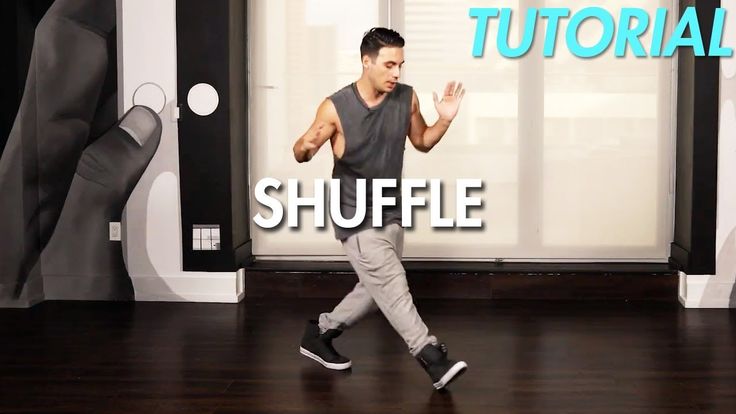 Although I would like to ask the participants about their motivation, about what drives them when they dance, but in this format I do not always have such an opportunity.
Although I would like to ask the participants about their motivation, about what drives them when they dance, but in this format I do not always have such an opportunity.
Dancing is…
Alexandra Child, actress
Dancing is a special niche. You're addicted to it. You get some unreal rush of happiness hormones, so I recommend it to everyone, especially to someone who is very sad.
Marina Zudina, actress
I have a feeling that I will continue to do this. Dancing will definitely be in my life. I discovered a completely different world for myself. And when I start to say to someone: "You know, dancing helps to relieve stress and treat depression," they answer me: "And we dance." I think: "Oh my God! What is it, I didn't dance alone!?"
Shot from the program "Dancing with the Stars"
Mikhail Shchepkin, dancer, participant of the project
I think that our show is interesting primarily for people who, perhaps, have dreamed of dancing all their lives, but were afraid to leave their comfort zone.